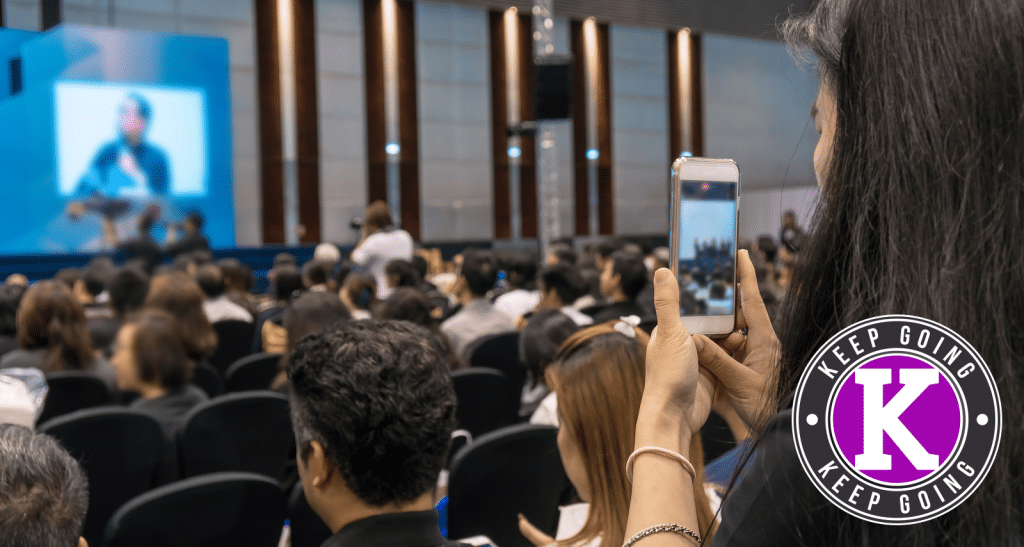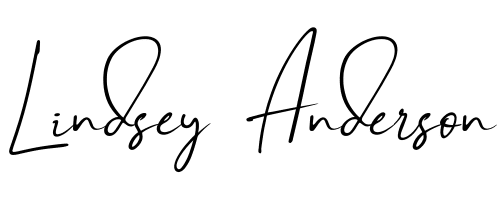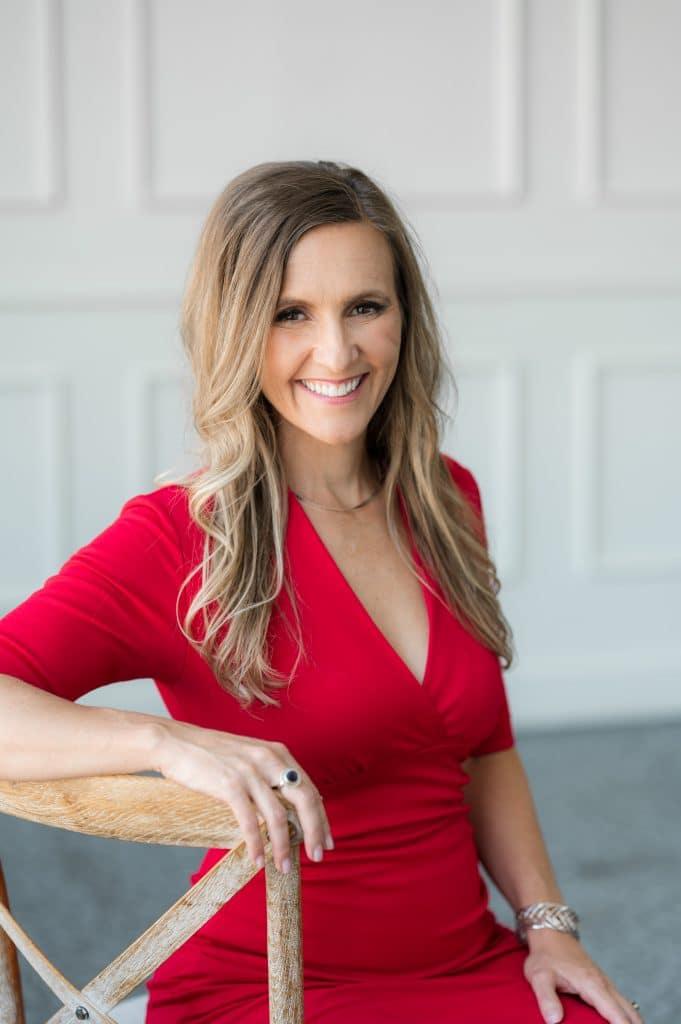The ways to market and promote yourself and your business are expanding every single day. However, with all the focus we do on online marketing, it’s easy to forget the ways to promote your business offline. Yes, advertising goes hand-in-hand with promoting your business offline, but there’s a different way to spread the word. Live events are popular among the business world, but when using an event as a marketing tool, you’ll find just how successful and resourceful they can be.
Using a live event as a marketing tool doesn’t seem like something you’d think of immediately, but live events can be wildly successful! Just ask Vanessa Shaw—a business coach and the creator of the Boutique Business Model, Vanessa works with business owners looking to scale up to multiple 6 or 7 figures. Through her live event marketing, she successfully expands her own business through a variety of strategies, and today, we’ll be discussing her extremely helpful tips.

Using a Live Event as a Marketing Tool and The CLICK Technique: K for “Keep Going”
Before we get into the details of using a live event as a marketing tool, we have to discuss The CLICK Technique! A five day crash course that I invented, The CLICK Technique is designed to help you get more traffic and leads. If you find your website sitting dead in the water, this is the marketing plan you’re looking for. Each letter in the word “CLICK” stands for something different, and when combined, I can guarantee that you’ll find the results you want!
Now, a live event as a marketing tool can fall under several things, but in this case, we’ll focus on “K”, for “keep going”. Once you’ve got your business squared away, you’ve simply got to push forward in order to continually find success. It doesn’t happen overnight, and it certainly won’t appear without you working hard for it. Putting in some elbow grease to get the job done and just keep going is the best way to ensure that your business is as long lasting and successful as you want it to be!
A live event as a marketing tool operates under the same structure! In order to make sure you’re doing what you can, you need to push forward, and just keep going. People aren’t going to come to your events if you don’t put in the hard work to make it as appealing and valuable as possible, and offering some amazing content is one of the best ways to get people lined up as quickly as possible.
A Live Event As A Marketing Tool: The 3 Components to Success
Now that we know what to focus on, how to use a live event as a marketing tool is something we can manage a little easier. There’s a multitude of ways to go about implementing a live event into your business plan, but doing so takes a lot of careful planning and staging. It’s a game for people who have nerves of steel and patience to spare.
Overall, you’re encouraging people to sign up for your business—whatever product or service you may be offering—through the power of content and valuable information. If they leave feeling like they’ve learned something substantial that they can implement in their own lives and business endeavours, then you know you’ve done something right. The trick is, however, to not overplan and to make sure that you’re taking on exactly what you can handle—nothing more, nothing less. That’s how you effectively plan a live event as a marketing tool.
Number 1: Small Events and Big Events
When it comes to using a live event as a marketing tool, there’s nothing more basic than deciding which type of event you’d prefer to host. Webinars are great, of course, but there’s nothing that can take the place of being in a room with someone, and building that relationship while teaching them about the expertise of the business. So when it comes down to it, you can decide which kind of event you’d prefer to host—a larger one that lasts for several days, or a smaller one that lasts for just one day.
Small events are more for people who prefer a more intimate setting, where they can learn things directly and interact with the people in charge easier than they would in other settings. Advertising for a small event, however, works a little differently than you’d think. Using typical tactics like sending out invitations to your mailing list, using social media to get the word out (whether that be through Facebook ads, or a different channel), word of mouth is honestly the best way to get attendance up. Local events rely on people in the area to attend, and people who are eager and excited for what you’ve got to offer are more than willing to get the word out. Through this method, people who signed up will bring friends, expanding the event and making the use of a event as a marketing tool a success!
Large events, however, require a little more attention. An email campaign is a tried and true method to easily get the word out from the get-go, as well as having clients invite people themselves. Clients are important for spreading the word, as they’re the best ambassadors for the brand: they know the business well and will be eager to spread good things about it when asked. Through this tactic, as well as encouraging people to bring their friends and think about who they’d like to bring along, you can offer preferential rates for references, which doubles attendance with every ticket sold!
Some important things to think about when it comes to these things, however, is that people will have a preference for one. Both work out well when you’re trying to use a live event as a marketing tool, but you can’t stop people from preferring one versus the other. The overall decision, of course, is up to you. And remember—smaller events don’t always pull incentive for people to travel for a day, so keeping smaller events local is a better way to ensure successful turnout rates, while large events will certainly draw people in from all over the country and, sometimes, the world!
Number 2: Running Event Strategies
After you decide which kind of event you’d like to host, the next step revolves around successfully and efficiently planning the event. Now, planning a live event as a marketing tool is not for the faint of heart and certainly requires a healthy amount of patience and organizational skills. It’s easy to think that you’ll fail due to a lack of sign-ups right in the beginning or near that middle phase. However, people are prone to do things last minute, and honestly? There’s not much you can do to stop them! You’ll often see that numbers dramatically increase in the last month of sales leading up to the event, and no matter what, you need to market until the very last minute.
Planning an event also requires you to look at the expenses. There’s a lot of moving parts when it comes to events. For example, you’ll want to think about how high end you want the event to be, as well as where to host the event. And depending on where you’re hosting the event, will you be providing room and board for people who’re visiting?
Keeping your metaphorical ducks in a row is the best way to ensure that things move swiftly and go off without a hitch. However, you can’t forget that the point of running an event as a marketing tool is about educating people on your business, and making offers to the audience members that choose to come to see if they’d like to implement what you’re offering into their own lives and businesses.
The best advice you can remember when planning an event is to start small. Attend other events and see why people want to do it, and get a feel for what you’d like to do yourself. People can get sucked into it so quickly and think that they’ve got it under control, but they’re overwhelmed, exposing themselves to way too much risk by planning too big. Avoid mistakes like buying up large blocks of rooms that you cannot fill and, instead, start small and build your way up. It’s the best way to guarantee that you’ll succeed from the beginning. You can sell the fact that it’s more intimate so you can iron out the kinks and work on what you need in terms of your content, your offer, and moving people into the programs.
Number 3: Filling An Event Successfully
The last component of running an event as a marketing tool revolves around being able to fill the event successfully. People often go to events and don’t fully realize just how much work goes into filling up a room, and though you may see people pull it off effortlessly, you must remember to have realistic expectations of your own. Think about your communication strategies. Make sure you’re sending email campaigns to your list in order to successfully get the word out as quickly as possible. Think about power points for tickets so people have the motivation to sign up now instead of later, saving them money in the end. Consider “bring a friend” strategies, which will earn people discounted prices while also doubling the audience with every ticket sold. Use social media marketing (Facebook and LinkedIn), and get some of your best people (clients, partners, vendors) to invite people and fill the room.
There are multiple ways to ensure that you’re reaching out, and however frustrating it may be that people are last minute, you must remember not to give up and that you’ve got to market until the very last moment.
In the face of using an event as a marketing tool, you must also make sure that the event has a bold promise. What are you going to deliver in that event that other businesses cannot offer? It’s not rare to find that events can be full of sales and lack a genuine amount of content. What you’re aiming to promise them is that even if they don’t sign on to what you’re offering, they’ll walk away learning valuable content and feeling good about going to the event. If you can teach them things that they can and will apply in their work life, you’re doing it right.
Using A Live Event As A Marketing Tool: Plan Effectively, And You’ll See Results
Overall, planning a live event as a marketing tool relies heavily on you to make the right decisions and avoid the pitfalls of running in too quickly. You want to make sure that you’re taking on exactly what you can handle and that you’re effectively marketing your business in the best way possible. Events are helpful for getting the word out about what you can do and how you can help other people, and using that platform to reach out and gain more clients in the process is an excellent way to create more leads for your company.
What you want to strive for is education-based marketing. You want to teach people how to do things through content and demonstrations, as opposed to the process of forcing and pushing sales onto people. Giving them informed discussions and valuable content, after all, is better in the end. Even if they leave the event with a powerful decision that the program isn’t for them, you can know that you helped and did your job as efficiently as possible.

